Film Name:碟中諜6:全面瓦解 / Mission: Impossible – Fallout
In our view, the most crucial criteria for judging a film’s excellence lie in its story and core themes. Even for genres like action films where standards might be somewhat relaxed, a poorly crafted plot will likely undermine all other strengths, no matter how well executed.
Films that can win applause solely through action sequences are rare indeed, and the Mission: Impossible franchise stands as a prime example among them.
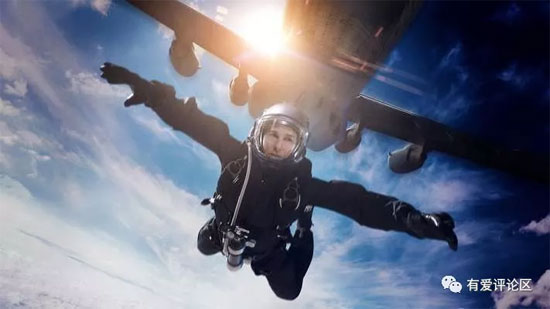
After 22 years of service with the IMF and six films, Ethan Hunt—played by Tom Cruise, now 56—still charges like a madman into death-defying frontlines. This remarkable dedication has become the biggest selling point for Mission: Impossible – Fallout.
But if you go to see Mission: Impossible – Fallout just to watch Tom Cruise pull off another impossible mission, you’re in for a… pleasant surprise. Because this film offers more than just thrilling sensory stimulation—after all, “formulas never go out of style; only creators who refuse to evolve do.”
[Friendly reminder: The following text contains minor spoilers.]
Earth-shattering crises, sinister conspiracies, hand-to-hand combat and gunfights, high-tech gear, plot twists… Any action film featuring secret agents inevitably falls back on these same tired tropes.
Compared to predecessors like Bond, Bourne, and Kingsman or their successors, Ethan Hunt’s enduring appeal lies squarely in his black-and-white commitment to “defying the impossible.”
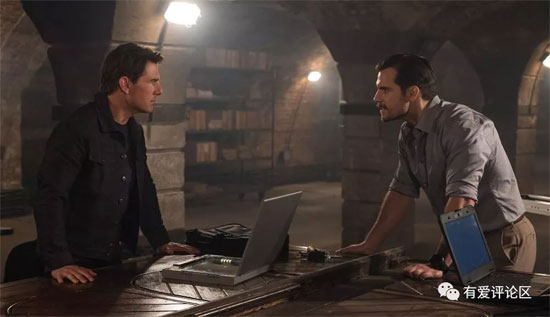
Unlike past battles where everyone always pointed their guns in the same direction, “Fallout” tried something new this time: first letting Ethan screw up, then having the CIA seize the opportunity to plant Walker—a “comrade” no less capable than Ethan—within IMF.
Thanks to Henry Cavill’s commanding presence as Superman, his portrayal of the supporting male lead effectively disrupts the franchise’s established IMF-centric dynamic. Whether deliberately or accidentally, Walker complicates mission execution, injecting a welcome freshness into the narrative.
Though the film’s cast isn’t extensive, its characters boast remarkable complexity.
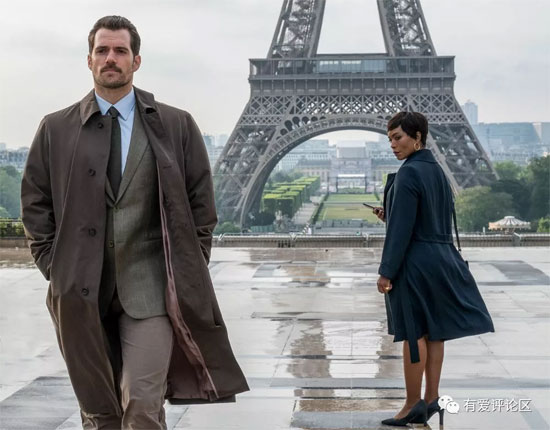
On the surface, the mission is for IMF to redeem itself by retrieving the plutonium sphere, with “The Apostle” as the direct adversary. Yet subsequent factions become entangled: the CIA seeking to correct its own mistakes and advance its ambitions; the White Widow-led broker organization; Solomon Lane, the former Syndicate leader pursuing his ideals; and MI6 aiming to eliminate Lane covertly. With numerous characters and factions, with distinct layers. In short, viewers will need to engage their minds to fully grasp the narrative.
In terms of plot construction alone, “Fallout” surpasses over 80% of action films.
Naturally, the signature “teamwork” of the Mission: Impossible franchise is both preserved and elevated in this installment.
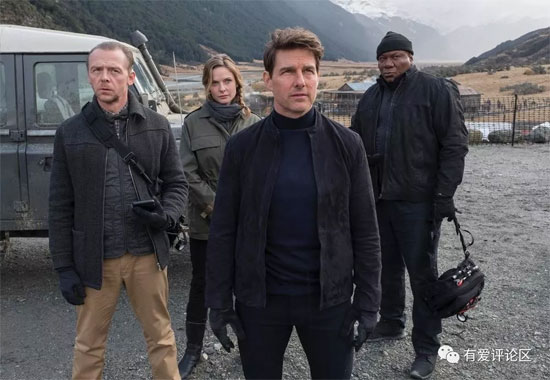
Beyond the ever-present Ethan and Luther, the dual-toned Benji has secured his spot. The hands-on boss Henry and the mid-story addition Ilsa also add significant depth to the film.
As for the movie’s biggest draw—the action sequences—it’s safe to say: they’re spectacular! While not overly explosive, they’re absolutely no slouch!
A closer look reveals that the action sequences in “Fallout” follow a steadily escalating rhythm. After the initial HALO jump between Ethan and Walker, the intensity builds through scenes like the bathroom confrontation, the dinner escape, the daring prisoner transport hijack, the high-speed street chase, and the parkour pursuit, culminating in the climactic helicopter dogfight.
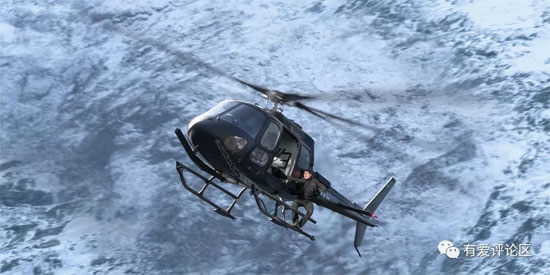
The film achieves this principle: “What others have, I must at least match; what others lack, I must innovate.”
Take the final chase sequence as an example: scaling helicopters and performing “free falls” are routine; Tom Cruise personally learned to pilot a helicopter and executed a “spiral dive” stunt that even professional pilots wouldn’t attempt; After crashing, they get stuck in a mountain crevice and pull off a “vertical strike.” During Ethan and Walker’s cliffside fight, the wreckage hanging on the edge isn’t just tension-building scenery—it becomes the key to victory. Then Ethan scrambles barehanded up the rock face, racing against time to secure the controls…
Each element alone isn’t groundbreaking, but when combined and executed at this level, it’s uniquely the domain of the Mission: Impossible franchise.
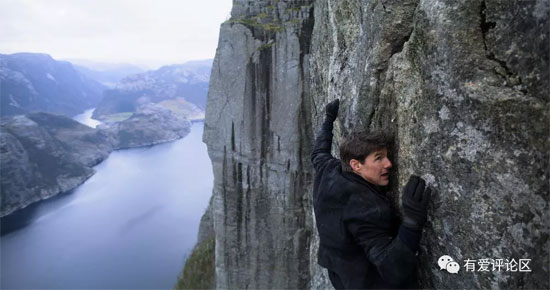
No wonder so many praise Fallout: while the formula remains familiar, its execution varies in quality—and this film undoubtedly ranks among the finest.
Personally, though, what I cherish most about Mission: Impossible – Fallout isn’t the action sequences—though they’re packed with sincerity—but the emotional arcs, sparse yet weighty.
Undeniably, the film’s core is action-spy thriller, with other elements serving as embellishments. Yet opening with Ethan’s dream of “calling off the wedding” was undeniably risky and jarring.
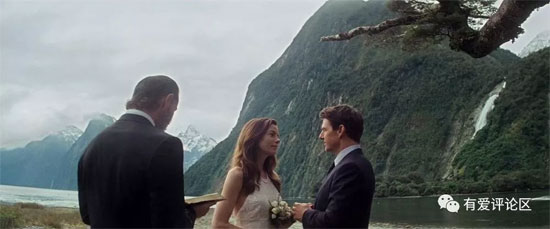
Julia is Ethan’s ex-wife, whom he “let go for love,” while Ryan is the relentless adversary haunting Ethan’s consciousness.
Upon revisiting this opening and the film’s details post-viewing, one realizes the design is remarkably clever. Though Ethan’s emotional arc serves as a minor embellishment throughout the narrative, its presentation—beginning with a hint (the theme), unfolding through explanation, and concluding with experience—achieves a powerful effect with minimal effort, revealing Ethan Hunt’s “tough exterior with a tender heart.”
Of course, Julia alone wouldn’t suffice here—Ilsa’s role is equally crucial, if not more so.
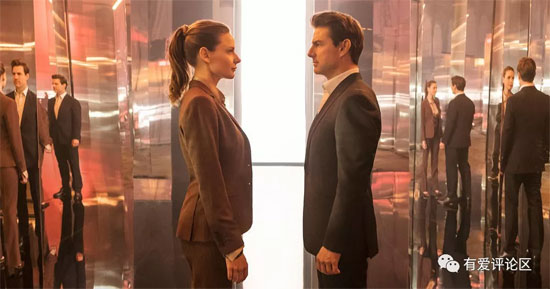
As a major character who appeared in the previous film “Rogue Nation,” Ilsa’s character is primarily defined as an assassin and spy. In “Fallout,” she not only returns as an MI6 assassin but also emerges as the only other woman Ethan has ever loved. This duality creates immense dramatic tension for Ilsa’s role, generating compelling chemistry across every segment of the film.
At this point, one must praise the casting, makeup, and cinematography of “Mission: Impossible – Rogue Nation.” While the male characters are noteworthy, the female leads are truly standout performances across the board.
Erika Sloan (Angela Bassett) radiates strength and cunning, the White Widow (Vanessa Kirby) embodies decisiveness and sensuality, while Julia (Michelle Monaghan) blends grace with sharp intelligence…
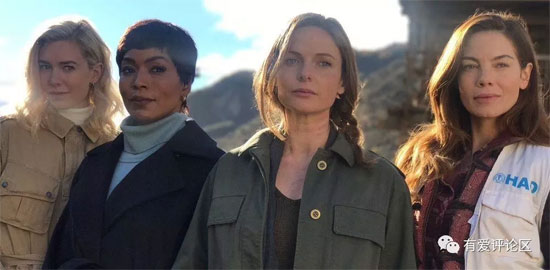
Even characters who appeared in previous installments, or actors who didn’t stand out much in other works, seem to have a fresh new feel in this film, offering a refreshing change.
Of course, the primary reason I’m uttering such “irrational” praise is Rebecca Ferguson’s portrayal of Ilsa—how can she be this beautiful?!
Whether in promotional stills or the actual film, whether clad in a full black bodysuit or casual attire, Rebecca radiates mature, elegant, and intellectual charm at every moment—truly a feast for the eyes.

Strangely enough, Rebecca’s look in “Fallout” isn’t even as sexy as her previous one in “The Secret Kingdom,” yet her allure seems to grow stronger each time I see her—and there always seems to be a new highlight (even with “The Greatest Showman” in between)…
Uh… oops.
Overall, I don’t think “Mission: Impossible – Fallout” quite lives up to the hype from some foreign critics—it feels slightly overrated. But considering today’s film landscape and the franchise’s legacy, it still deserves its praise. Either way, this movie is worth watching.
Please specify:Anime Phone Cases » Mission: Impossible – Fallout 碟中諜6:全面瓦解 2018 Film Review: The timeless “formula”